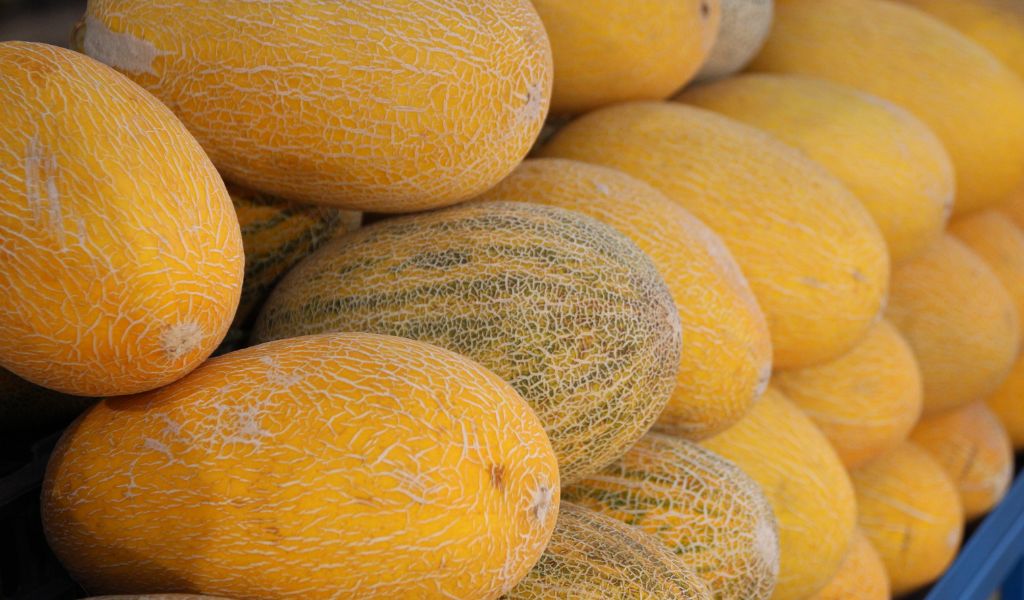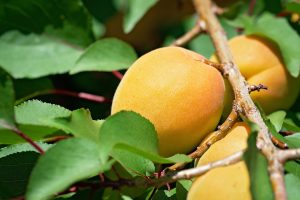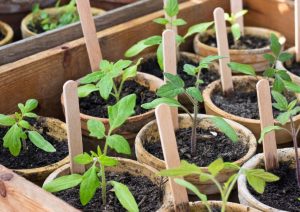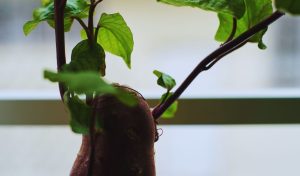Have you ever been in the grocery store, grabbed a ripe cantaloupe off the shelf, and thought to yourself “I wonder if I can grow this at home?”
Well, the answer is yes! You can absolutely grow cantaloupes from store bought fruit.
Let’s take a look at how you can get started growing your own cantaloupe today.
It is possible to grow cantaloupe from store bought fruit however the end results may not be as successful as growing from commercial seeds and, depending on the parent fruit, you may not get the outcome that you wanted.
When is the best time to start growing cantaloupe?
The best time to start growing cantaloupe will vary depending on the climate you are in.
Generally, it is best to wait until at least late spring or early summer when the soil and air have warmed, as cantaloupes need warm conditions in order to develop properly.
Though they can be planted earlier in regions with milder climates, planting it too early can lead to stunted plants and poor fruit production.
Additionally, the fruits will not be ready before late July or August if you sow the seeds too late.
Therefore, the best time to start growing cantaloupe is when the climate allows for consistent warmth and direct sunlight each day of the growing season.
Before you get started
It is important to make sure you have all of the necessary supplies.
For growing cantaloupe, you will need potting soil, an outdoor space that gets 8-10 hours of sunlight per day, and a container or pot large enough to accommodate the growth of your cantaloupe vine.
If your outdoor space is limited or doesn’t get enough sun, consider getting a grow light instead. Once you have gathered everything you need, it’s time to get started.
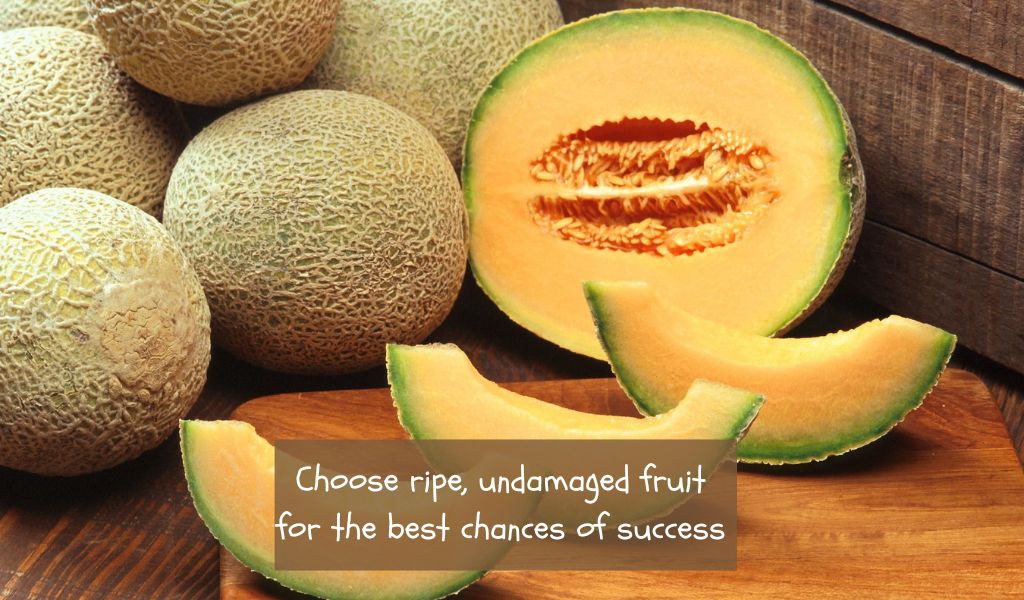
Harvesting the seeds
The first step in harvesting cantaloupe seeds is purchasing a ripe cantaloupe from your local grocery store or market.
Make sure that the fruit is ripe, clean and has no signs of damage.
Try to purchase an organic cantaloupe, that has not been subjected to any form of treatments, to give yourself the best chances of success.
Once you have the melon, cut it open lengthwise and scoop out all of the seeds into a bowl.
After the seeds are removed, rinse them off with cool water until all of the debris has been removed.
Growing from store bought fruit… 💭
Is always worth trying
You may get success or not
Seed from seed suppliers is always the best way to get a reliable crop


Planting your cantaloupe seeds
Once you have selected the perfect spot for your plant, fill your container with potting soil and place three or four seeds in it.
Depending on how much room you have you may wish to plant several pots of seeds as this will improve your chances of successful germination and fruiting plants.
Cover the seeds lightly with soil and water them gently until they are evenly damp but not soaked.
The seeds should begin germinating within about 5 days.
When they do start sprouting, select the strongest seedling and remove any others that may be growing so that only one remains in each pot/container.
Caring for your cantaloupe plant
Your plant will need plenty of water during its growth period, it should be watered every few days until harvest time arrives.
Make sure that both the soil and leaves stay moist but not overly wet as too much water can cause mildew or rot on your fruit before it has had a chance to ripen properly on the vine.
In addition to regular watering and weeding sessions throughout its growth period, you should also mulch around your plant (especially when temperatures drop) to help protect roots from frost damage and keep weeds at bay.
Pollinating the flowers
When your cantaloupe plant begins to flower, you will need to pollinate them in order for the fruit to form.
The easiest way to do this is by using a small paintbrush to simply transfer the pollen from one flower to another.
Once this process is complete, you should begin to see signs of the young fruits growing which you’ll see as the flowers will fall away, leaving a small swelling which is the beginning of the cantaloupe.
Feeding your vine
As your vine grows and the fruits begin to form, you can feed it a liquid fertilizer every few weeks.
This will help to increase the size of your cantaloupe as well as their quality.
Make sure to follow the instructions on whatever product you choose as each type has different directions for its use.
Harvesting your cantaloupe
When the fruit has turned a golden-yellow color and easily slips off of the vine, it’s time to harvest.
Take care not to damage the stem when you pick your cantaloupes as this can cause them to spoil quicker than usual.
Once harvested, store your newly grown cantaloupes in a cool and dry location.
Final Words
Growing cantaloupe is an incredibly rewarding experience.
With a little bit of knowledge, patience and dedication, you can start growing this delicious fruit in your very own garden.
We hope that these tips have been helpful and wish you the best of luck with your harvest.
Read Next
- Year-Round Vegetable Harvests: Extending the Growing Season with Smart Techniques
- Year-Round Harvest: Discover the Art of Growing Vegetables in All Seasons
- Why Edible Gardens are the Next Big Thing in Sustainable Living
- Why do tomato plants smell?
- When should you plant tomatoes?
- What’s the Best Soil for Sweet Potatoes in Containers

